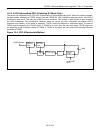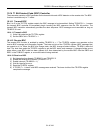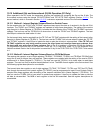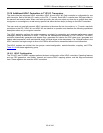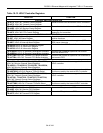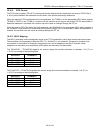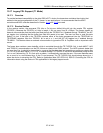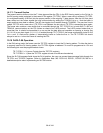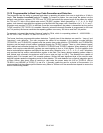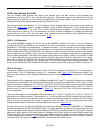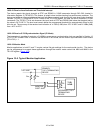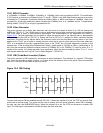
DS33R11 Ethernet Mapper with Integrated T1/E1/J1 Transceiver
98 of 344
10.17.3 Transmit Section
The transmit section shifts out into the T1 data stream either the FDL (in the ESF framing mode) or the Fs bits (in
the D4 framing mode) contained in the transmit FDL register (TR.TFDL). When a new value is written to TR.TFDL,
it is multiplexed serially (LSB first) into the proper position in the outgoing T1 data stream. After the full 8 bits have
been shifted out, the framer signals the host microcontroller by setting the TR.SR8.2 bit to a 1 that the buffer is
empty and that more data is needed. The INT also toggles low if enabled through TR.IMR8.2. The user has 2ms to
update TR.TFDL with a new value. If TR.TFDL is not updated, the old value in TR.TFDL is transmitted once again.
The framer also contains a zero stuffer that is controlled through the TR.T1TCR2.5 bit. In both ANSI T1.403 and
TR54016, communications on the FDL follows a subset of an LAPD protocol. The LAPD protocol states that no
more than five 1s should be transmitted in a row so that the data does not resemble an opening or closing flag
(01111110) or an abort signal (11111111). If enabled through TR.T1TCR2.5, the framer automatically looks for five
1s in a row. If it finds such a pattern, it automatically inserts a 0 after the five 1s. The TR.T1TCR2.5 bit should
always be set to a 1 when the framer is inserting the FDL.
10.18 D4/SLC-96 Operation
In the D4 framing mode, the framer uses the TR.TFDL register to insert the Fs framing pattern. To allow the device
to properly insert the Fs framing pattern, the TR.TFDL register at address C1h must be programmed to 1Ch and
the following bits must be programmed as shown:
TR.T1TCR1.2 = 0 (source Fs data from the TR.TFDL register)
TR.T1TCR2.6 = 1 (allow the TR.TFDL register to load on multiframe boundaries)
Since the SLC-96 message fields share the Fs-bit position, the user can access these message fields through the
TR.TFDL and TR.RFDL registers. Refer to Application Note 345: DS2141A, DS2151, DS2152 SLC-96 for a
detailed description about implementing an SLC-96 function.



